Diagnosing for cupped tires, knowing their causes, and fixing them appropriately is a more practical thing to do rather than outright purchasing a new set of tires as the latter will not only lead to uncalled expenses but also not address its root cause.
To fix tire cupping, certain procedures will be done such as tire rotation, wheel balancing, and alignment to address the causes of cupping. Worn-out suspension parts will also be replaced as part of the process, while a tire-shaving machine will be used to smoothen out the cupped surfaces.
What's In This Guide?
Tire cupping, as you might have guessed, looks like a series of cupped or scooped dips appearing on the outer edge of tires’ tread. It results in an uneven surface in the tread of the tires. Cupped tires also tend to be noisier too especially on highway speeds, but the main concern with having cupped tires is the potential risk of traction and control loss especially on emergency braking and maneuver.
Knowing the possible causes of tire cupping might prevent these from happening in the first place.
Possible Causes of Tire CuppingWorn out suspension system componentSuspension systems that include shock absorbers, bushings, and strut assembly are all subject to wear and tear over time. A worn-out component can cause excessive bouncing as these parts fail to evenly distribute the vehicle weight. This will in turn create uneven points of pressure in the tires, thus, tire cupping.
Misaligned and unbalanced tiresIdeally, a vehicle should have the correct angles of tires that evenly contact with the road. However, wheel misalignment happens, and consequently, this misalignment brings uneven stresses on the tire that will somewhat lead to cupping, or an irregular tire wear pattern also called sawtooth wear.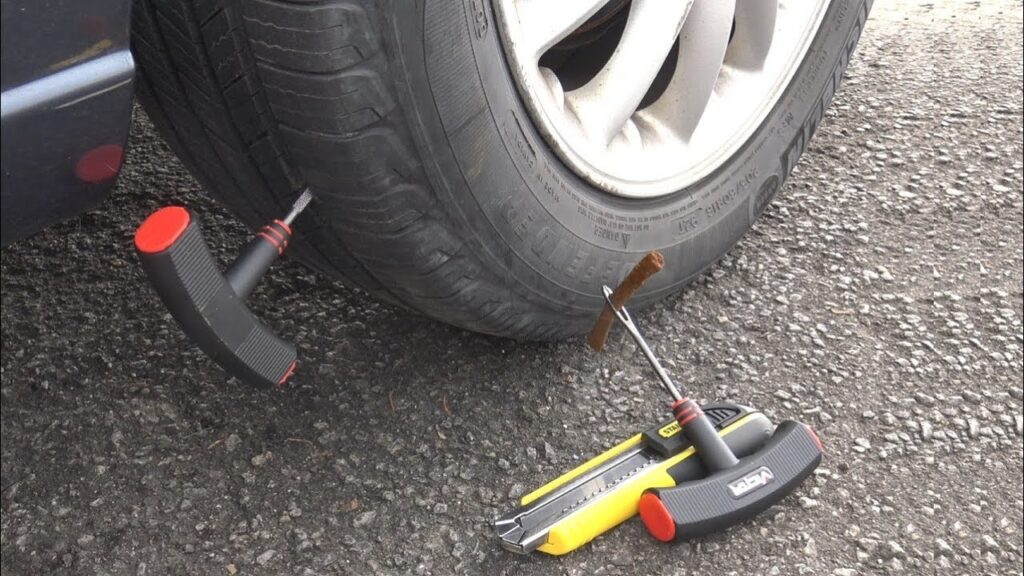
Poor quality, cheaply bought tires might not have the same rigidity and endurance which tires made with quality materials have. These cheap tires might also skip on the intended quality and stress checks to measure their durability.
Signs of Tire CuppingTire cupping can be visibly distinguished with random scoops or cups at certain areas of tire tread. Moreover, there are also tactual and auditory signs you may feel and hear that indicate that you may experience tire cupping. Some of these include a steering wheel and seat vibrations, noise coming from the tires, and a steering drag on either side when at cruising speeds.
Steering wheel and seat vibrationsVibrating or shaking felt through the steering wheel or seat are common manifestations of unbalanced tires, which can be potential cupping. If the vibration is felt in the steering wheel, the front seats may be unbalanced, while if the vibration is felt on the seat, the rear wheel tires are most likely unbalanced. If the vibrations were present on both the steering wheel and the seat, it is critical to have them checking altogether for possible cupping.
If the vibrations were present on both the steering wheel and the seat, it is critical to have them checking altogether for possible cupping.
Naturally, aside from the engine and the outside, noise coming from the wheel area is given, but if you are noticing noises coming from these areas greater than normal, a possible tire cupping may be the case since cupped tires tend to be noisier than usual, especially at highway speeds.
Dragging to left or right when steeringSince tire cupping can be the result of misaligned wheels, a veering vehicle on either side is one of the recognizable symptoms of misalignment.
Visible cups or scoops in the outer sideYou can check these ‘cupping’ yourself by looking at the tires for any uneven, scoop-like patches in tires’ tread.
How to Fix Tire CuppingProceeding directly to your trusted tire shop is your best option when you feel something is wrong with your tires. At the very least, you can diagnose the cause by examining the tire one by one, identifying the root cause.
At the very least, you can diagnose the cause by examining the tire one by one, identifying the root cause.
The first phase to fix tire cupping will be to identify the root cause. Properly diagnose your tires using several techniques to know what causes the problem. Then, when you have verified what causes tire cupping, have them serviced in a tire shop for appropriate repairs such as rotation, balance, alignment, tire shaving, or replacement should the condition turn out to be severe to be repaired.
Part 1: Diagnose Tire CuppingDiagnosing tires for cupping or scooping can be done by yourself through a careful and thorough inspection. First by examining the tires one by one, checking if the shocks are the culprit, then checking the front tires which allows you to determine if there’s an alignment problem that leads to tire cupping.
Examine the tires one by oneTo be able to check your tires properly for cupped tires, park your car on a level surface, preferably solid ground, then pull up the hand brake to keep the vehicle in place. Examine the tires one by one, on the inner and outer sides of the treads should any sign of cupping occur.
Examine the tires one by one, on the inner and outer sides of the treads should any sign of cupping occur.
Push down the fender area next to the cupped tire. If the vehicle bounces up and down more than once after you release after pushing down, it is more likely that the shocks are the reason for cupping.
Check for cupping in the front tiresLook for any cupping either the inside or outside of the tread. If the cupping is present on either side, wheel misalignment is most likely the cause.
Part 2: Tire Cupping RemediesThe next part is to take the vehicle to a tire repair shop to take an appropriate remedy. This may range from replacement of worn-out shocks, tire rotation, wheel balancing, and alignment, to tire shaving or a replacement for severe cases of cupping.
Take the vehicle to an auto repair shopAside from rotating your tires, the rest of the remedy can only be done by a tire or an auto repair shop. If your vehicle is still under the manufacturer’s warranty, take them to an authorized dealership. You can have some of the affected parts such as shocks replaced for free, labor charges included.
If your vehicle is still under the manufacturer’s warranty, take them to an authorized dealership. You can have some of the affected parts such as shocks replaced for free, labor charges included.
In some cases where the cupped tires are in the front, tires will be rotated to the rear to even out the tires.
Wheel balancing and alignmentBefore camber alignment, your wheels might also be checked in a wheel balancing machine as weights might not be accurate to the level of wear.
Next, as part of a tire rotation, your vehicle will also undergo a proper wheel alignment procedure to prevent recurrence of tire cupping.
Affected tires might be brought to a tire-shaving machineThis procedure, though rarely required, is necessary for severe cupping to even them out. As tires were removed from the vehicle, they will be mounted to a specialized machine to smoothen out the cupping or scooping.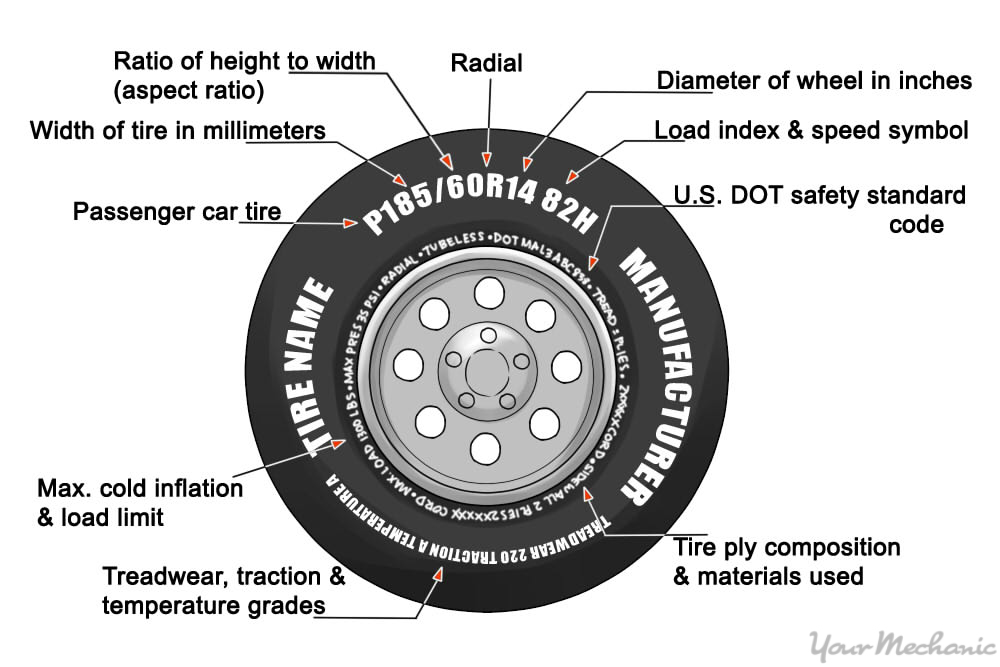
Tire cupping prevention can be addressed with regular tire care maintenance. It should be done on time if you want your tires to have a longer lifespan. These processes include tire rotation, wheel balancing and alignment, and maintaining the proper air pressure. Additionally, your vehicle should at least be checked every 6 months regardless of mileage as driving in different road conditions might affect overall tire health.
Periodic tire and suspension maintenance checkThis process is better done in timing with your car’s periodic maintenance visit. Additionally, you may be able to have the suspension checked during this scheduled visit since these are one of the culprits of cupped tires.
Wheel balancing and alignmentAs your tires wear, previously installed weights may not be applicable and a balancing might be required. Moreover, tire professionals can easily attest upon visual inspection should your vehicle be bound for an alignment.
Did you know that a lot of tire wear problems were caused by insufficient tire air pressure? Have them checked at least once a month to maintain optimal air pressure. You may also take advantage of certain devices that replace the traditional valve cap with a sensor to monitor the pressure without pulling out a traditional tire pressure gauge. Likewise, newer vehicles equipped with tire pressure monitoring do the same.
Final thoughtsWe often mistake tire maintenance with just keeping the rubber healthy alone. However, most of the causes of tire cupping were brought by worn out or poorly-maintained vehicle parts that consequently affect the tires over time if left unnoticed. In other words, tire cupping can be prevented if you follow regular car maintenance checking and replacement schedules.
Tire cupping is usually caused by worse tear, wear, and pressure on the surface of the tire. Tire cupping is sometimes referred to as tire scalloping. It is an uneven wear pattern that looks like little dips around the tread area. When there is cupping, you might notice a slight rumbling sound as the vehicle moves. You can also notice an uneven surface in the tread of the tire. These surfaces often resemble “scallops”.
Tire cupping is sometimes referred to as tire scalloping. It is an uneven wear pattern that looks like little dips around the tread area. When there is cupping, you might notice a slight rumbling sound as the vehicle moves. You can also notice an uneven surface in the tread of the tire. These surfaces often resemble “scallops”.
Tire cupping can be the result of either poor vehicle alignment, manufacturing defect, or improper inflation. Tire cupping causes may vary also. If the cupping is not that severe, you could still fix it. But if it severe, then you don’t have any choice but to change it into a new one.
Some factors that can cause tire cupping are the following:
Inexpensive low-quality tires
This one of the most common cause why cupping happens. Tires of higher quality are better able to resist chipping by the environment that causes cupping in cheaper tires.
Suspension on the vehicle
When you still have tire cupping even if your tires are higher quality then the possible cause is that there might be an errant suspension on the vehicle.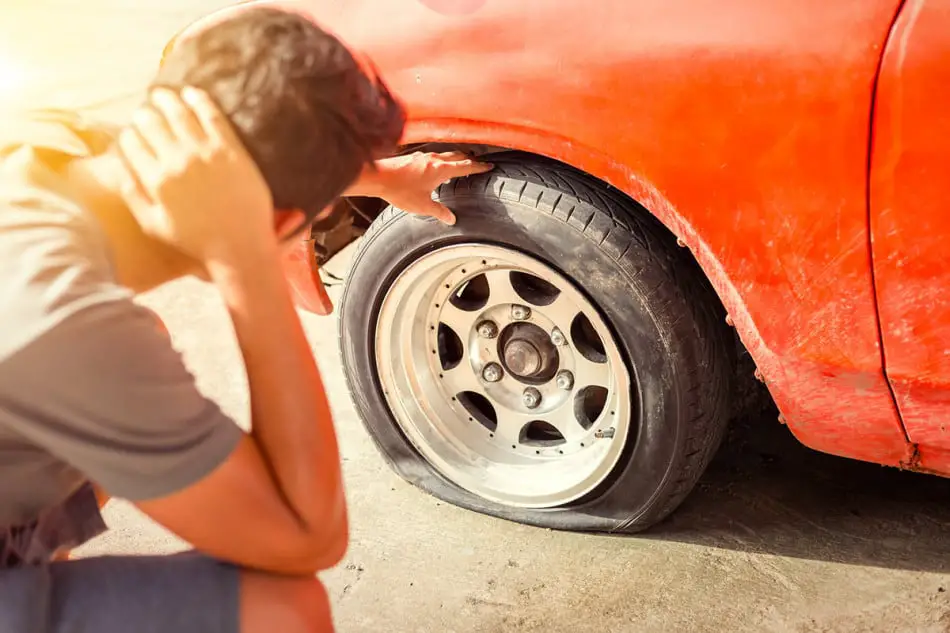 As the vehicle rolls along, the suspension on a vehicle allows the tires to bounce. The extra action will make scuff marks on the tires, resulting in cupping.
As the vehicle rolls along, the suspension on a vehicle allows the tires to bounce. The extra action will make scuff marks on the tires, resulting in cupping.
Alignment of the vehicle
When the cupping are only on the rear, the possible cause is that there may be a problem with the alignment of the vehicle.
• If your tires are rated 30 to 35 pounds and you see visible cupping on it, then inflate your tires to 40 pounds.
• Since cupping usually occurs on the outside only, place the side that is cupped on the opposite side by simply rotating the tire so that the cupped side is on the inside.
• Replace worn or faulty suspension parts such as CVC joints, struts, ball joints, wheel bearings.
• Consult professionals in order to determine which suspension part has the problem that could eventually result to tire cupping.
• If your tires are cheaper and has a low quality, better replace it with more expensive one. You can talk to the salesman when buying quality tires and with a solid rubber formula on the sidewall.
You can talk to the salesman when buying quality tires and with a solid rubber formula on the sidewall.
• Park your car and set the emergency brake.
• Identify which tire are cupped by carefully examining the tires one by one.
• If the vehicle continues to bounce up and down more than once after you push down and release, then more likely, shocks are the reason for the cupping.
• Try to look if there is cupping on the front tires. Mis-alignment of the front end is the likely cause when the cupping is on the inside of the tread. It is best to immediately take your vehicle to repair shop for proper alignment.
• Change the shocks or struts by bringing your vehicle to the repair shop. The tire shop may be able to use a tire-shaving machine to even them out especially if the cupping is severe. These items are responsible for turning kinetic energy into heat. Shock and struts absorbs the energy and force oil through small holes which will then create heat.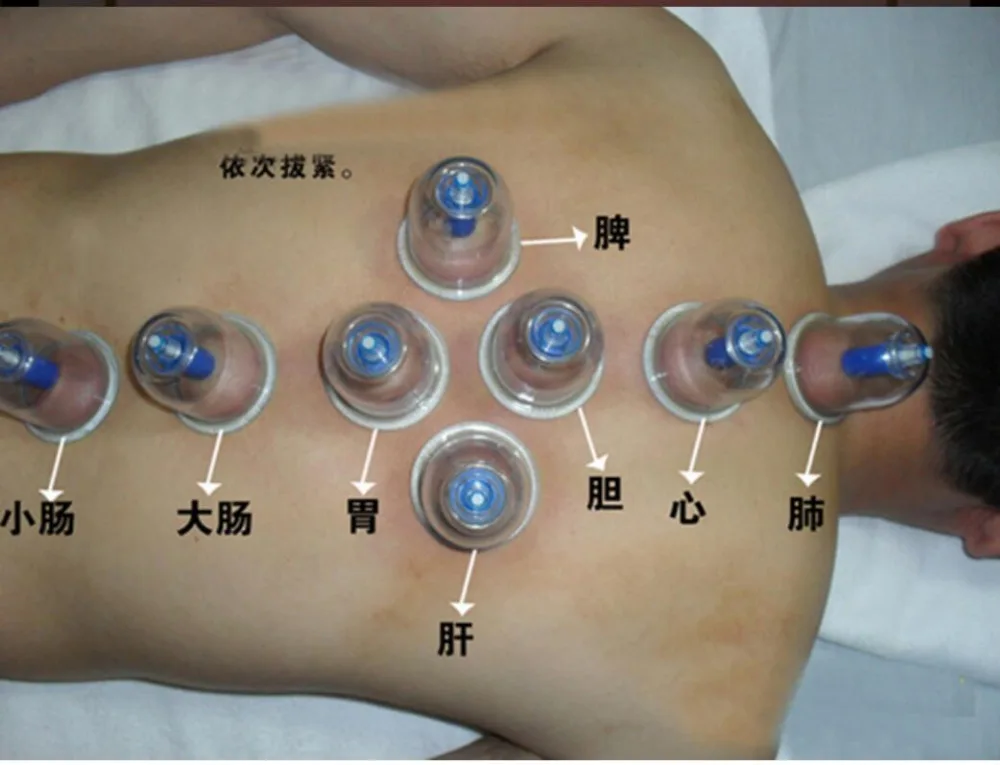
• Greater surface area contacting the road reduces the sponginess and bounce that a narrow tire might have. It’s best to switch to wider tires and rims. Alloy rims also have an extra benefit of enhanced styling.
• Choose unidirectional tires since this kind of tires were designed to provide maximum traction, road-gripping characteristics, and handling. Using a high quality rubber reduces the chance of having tire cupping problems.
Another season of changing shoes is approaching. And you may remember that on one of the tires after the last winter/summer there is a jamb - a small bump. I don’t want to run to the store for the sake of one new tire. We understand. Or maybe it looks even better if repaired?
Yes, not every wheel that has met with a nail, rebar sticking out of the ground or a sharp stone on the road is considered damaged. Everything, of course, depends on the scale of the damage and its location on the tire itself.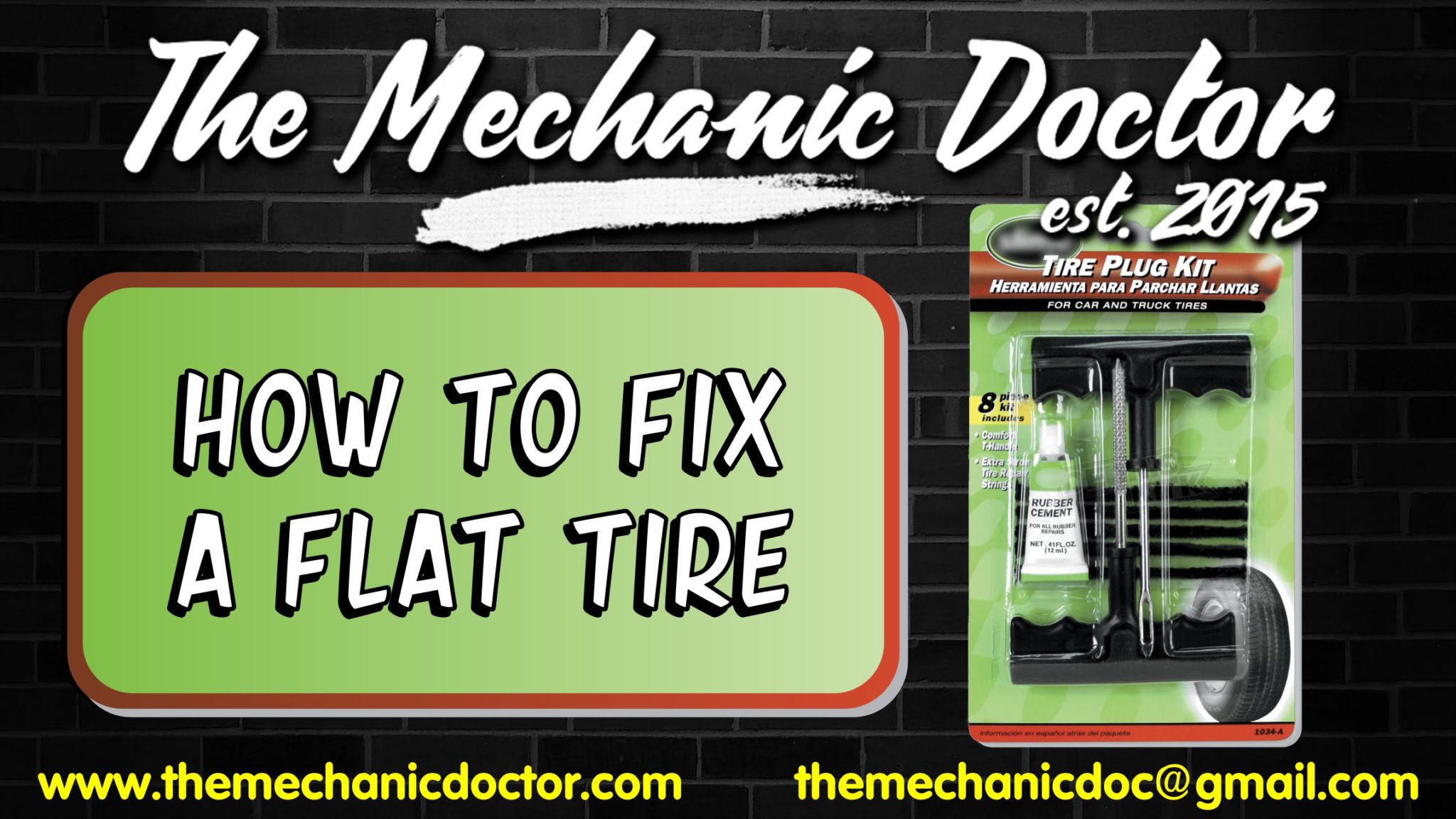 Some are easily repaired, while others are simply impossible to do - the tire can only be sent to the trash. nine0003
Some are easily repaired, while others are simply impossible to do - the tire can only be sent to the trash. nine0003
A bulge on a wheel, referred to by drivers as a bump or bulge, is the most common tire sidewall defect. It appears due to a collision with an obstacle or after falling into a pit, more often at high speed. The threads of the sidewall carcass are easily damaged by impact, and the tire at this point can no longer hold the load and air pressure - swelling appears. A small bump sooner or later turns into a big one, and driving with such a defect is dangerous - the wheel can shoot at any moment. At high speed, this is fraught with loss of control, departure from the road and a rollover. nine0003
The quality of roads in Kazakhstan contributes to the appearance of bulges on tires
Some types of bulges are repairable, although this is a temporary measure. Not a single patch can restore the factory rigidity. Ideally, change the tire.
Special cord patches can extend the life of a tire with a herniation, even if the swelling has appeared on the tread. The sidewall is a different story. If the swelling appeared at a distance of more than 40 mm from the side, it can be repaired. If not, then the wheel needs to be replaced. Blisters on low profile tires are most often non-repairable. nine0003
For maximum safety when riding with a repaired bump, insert the tube. This is an inexpensive and reliable solution. On our market, you can find cameras made in China and Russia, the latter are slightly more expensive, but also of better quality.
The elimination of a side cut is a serious operation, therefore, as in the case of a bump, you will have to go to the professionals. We need cord patches, fortunately in our time they are of different sizes and with a different number of layers. And if you do it wisely, then you can't do without special tools and vulcanization. nine0003
A cut, by the way, cannot be healed in all cases. If the gap is in the shoulder area of the tire, it is unlikely that anyone will undertake to repair it, since no guarantees can be given here. However, our Kulibins take on even the most difficult cases, cutting out parts of the sidewalls from the tires and even weaving the cord on their own.
If the gap is in the shoulder area of the tire, it is unlikely that anyone will undertake to repair it, since no guarantees can be given here. However, our Kulibins take on even the most difficult cases, cutting out parts of the sidewalls from the tires and even weaving the cord on their own.
Tire overhaul. We would not put such a wheel on ourselves
Low profile tires can be repaired, but more difficult. A tear in the sidewall is easier to seal on tires with a medium or high profile. nine0003
Sometimes a cut is confused with a pluck. This is when the outer layer of the sidewall caught on something sharp, a tear formed, but the frame itself remained intact. There is nothing wrong with that, although the drivers at the tire fitting company successfully repair the cut, for which they take it accordingly.
If a piece of rubber remains on the sidewall, then glue it with ordinary superglue (101st). If it came off, then it is better to cover it with raw rubber and vulcanize.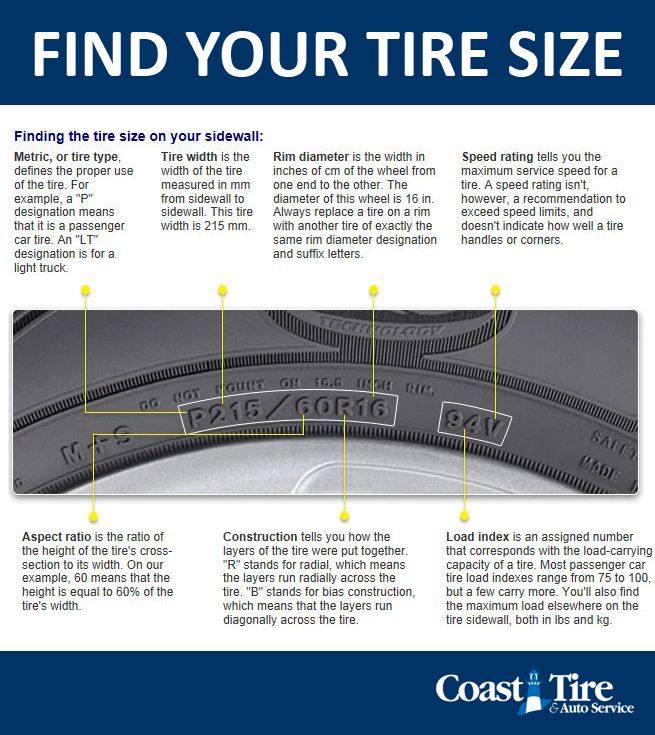 Leaving the pluck bare is not recommended, because the tire carcass, often consisting of a metal cord, will quickly corrode. nine0003
Leaving the pluck bare is not recommended, because the tire carcass, often consisting of a metal cord, will quickly corrode. nine0003
In Europe, defective or used tires are perforated before being sent for scrap to prevent their resale and possible operation. But they don’t know that we have such holes on the sidewall patched once or twice
Cuts and hernias are not the only possible damage to the side of the tire. You can also spoil the side ring, in the process of changing shoes, for example. If it’s for garlic, then such a tire is already dangerous. Sooner or later, the tire pressure and the load in motion will start to squeeze the rubber off the rim - a wheel explosion can occur. nine0003
This ailment is repaired if the wire ring - the base - is intact. There are no special technologies and materials to correct this particular problem, but most often craftsmen use a two-component composition for chemical (also called cold) vulcanization. After mixing, the mass is pressed into a fat-free damage. Compound manufacturers recommend waiting 72 hours before mounting a tire. Of course, our masters do not pay attention to this condition - they put the tire right away. And it’s good if the wheel is flat because of this at night in the parking lot, and not on the road. nine0003
After mixing, the mass is pressed into a fat-free damage. Compound manufacturers recommend waiting 72 hours before mounting a tire. Of course, our masters do not pay attention to this condition - they put the tire right away. And it’s good if the wheel is flat because of this at night in the parking lot, and not on the road. nine0003
If the side ring tears are barely noticeable, but the wheel still deflates, then you can use a special liquid - a bead seal designed to seal a tubeless tire.
These seals have been used in motorsport for some time. In particular, in the American Formula D Drift Series, drivers used compounds to keep the tire on the rim even with minimal tire pressure. Now they are banned.
Pay attention to the left rear wheel of the Nissan Silvia S13. Due to too low pressure, it was literally taken off the disk under load
Every schoolchild has faced this problem when patching the inner tube of his bike after hitting something sharp. Repairing a car tire puncture with your own hands will also not be difficult even on the road. But for this you will need a pump (or compressor) and a universal tire repair kit with harnesses. All this is sold at any car market or gas station.
Repairing a car tire puncture with your own hands will also not be difficult even on the road. But for this you will need a pump (or compressor) and a universal tire repair kit with harnesses. All this is sold at any car market or gas station.
Repairing a tire on the side of the road with harnesses
The process is simple. If we are talking about the front wheels, then in most cases the wheel can not even be removed, it is enough to turn the steering wheel in the right direction, find the puncture site and carry out repairs. First, the hole is cleaned with a helical awl from the set. The tourniquet itself is smeared with glue and tucked into the eye of the awl, after which it is inserted into the tire hole. With a sharp movement, the tool is removed, and the tourniquet remains in place and clogs the hole. The tails are cut with a knife, but not at the root, it is recommended to leave about 20 mm. The tire is inflated and checked. nine0003
Sometimes a nail or self-tapping screw clogs the hole by itself, remaining in it.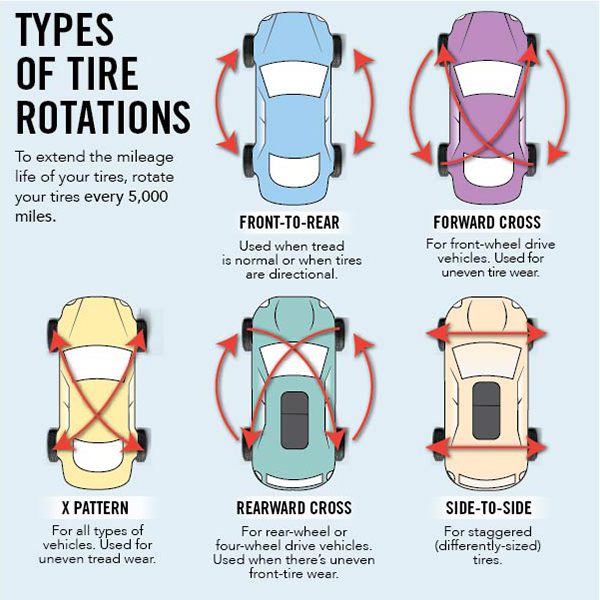 If you see a hat in a tread, do not rush to pull it out. While the pressure is holding, move to vulcanize. And sometimes they drive with a screw in a tire for weeks.
If you see a hat in a tread, do not rush to pull it out. While the pressure is holding, move to vulcanize. And sometimes they drive with a screw in a tire for weeks.
Repair of a puncture at a tire shop
Punctures are also repaired with harnesses at a specialized service, although among professionals such repairs are not considered long-term. After a few months, the flagella dry out and can let air through. There are more advanced methods like cold and hot vulcanization. The latter is more reliable. In this case, the hole is sealed with an elastic patch, and the funnel from a foreign object is filled with a special compound. After that, a vulcanizer is put on the tire, it heats up the rubber and solders it. nine0003
In addition to the plaster, the puncture is also repaired with special cord fungi. Craftsmen process the puncture site: drill it and treat the surface with a tool to roughen it. Then the repair area is lubricated with glue (it is also called cement) and a fungus is introduced. This is done from the inside of the tire. The cap of the fungus is rolled, and the excess legs are simply cut off from the outside.
This is done from the inside of the tire. The cap of the fungus is rolled, and the excess legs are simply cut off from the outside.
Puncture repair with sealant
With the advent of tubeless wheels, and later run flat tires, many automakers began to abandon spare wheels. Instead, repair kits with compressors are supplied with the machines. A repair kit is essentially a bottle of pressurized sealant. Later, such spray cans began to appear on the shelves of ordinary car dealerships. nine0003
This method has not taken root in the CIS, because the condition of the roads makes it necessary to have at least a stowaway in the kit, but it can also be considered as a method of repair on the road.
The car must be jacked up and sealant must be pumped into the damaged wheel through the nipple. Next, you should spin the wheel, then pump it up, lower the car and drive a few hundred meters. If the tire tightness has not been restored, repeat the procedure.
If the tire tightness has not been restored, repeat the procedure.
For commercial vehicles, cutting the tread with a special device (regrower) is a common thing. Moreover, such tire retreading is provided by the factory (marked REGROOVABLE on the sidewall) to increase the service life. But there are entrepreneurs who undertake to deepen the grooves in tires for passenger cars. But they are not intended for such an operation. Often used tires for sale are “refreshed” in this way. Be careful!
What is the threat?
The worst option is that the retreaded tire will shoot out on the road, as the master can damage the undertread layer when deepening the grooves. Such a tire will not be able to hold pressure at some point. There will be a boom! At best, the tire will indeed last a little longer, but is the game worth the candle? We think it's not worth it.
How is cutting done?
A regrower is used to cut the tread.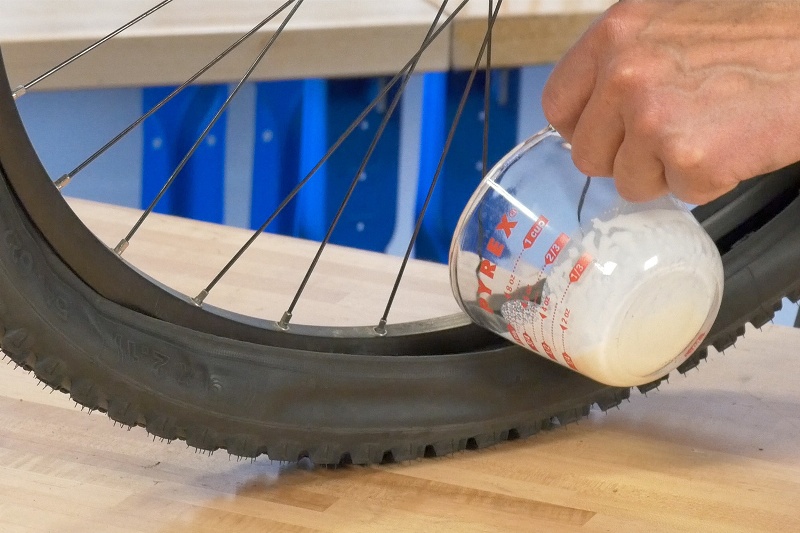 Roughly speaking, this is a large soldering iron with interchangeable tips of various shapes. It goes through rubber like a knife through butter. nine0003
Roughly speaking, this is a large soldering iron with interchangeable tips of various shapes. It goes through rubber like a knife through butter. nine0003
If the tire is for passenger cars, then it is worth taking on a regrower only in one case - when part of the tread pattern was welded with "new" rubber during repair. This is where threading comes in handy in order to restore the grooves and symmetry of the tread.
Vehicle operation is prohibited if:
- tires have a residual tread height of less than 1.6 mm; nine0131
- tires have punctures, cuts, ruptures that expose the cord, as well as delamination of the carcass, delamination of the tread and sidewall;
- tires in size or load capacity do not match the car model;
- tires of various sizes, designs (radial, diagonal, chamber, tubeless), models, with different tread patterns, winter and summer, studded and non-studded, new and restored, are installed on one axle of the car; nine0131
- Tires retreaded according to the second repair class are installed on the front axle.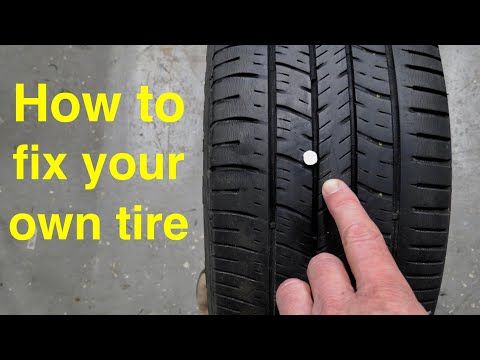
What is a second class repair?
This is the case when the carcass of the tire is restored after serious damage. A side cut (or tear) is a serious damage to the tire carcass.
Category: Operation and maintenance
Article reading time: 5 minutes
Bookmark this
A car tire has a complex structure and a specific rubber compound that protects the tire from impacts and retains its shape under high loads. The design of the wheel consists of several strength frames - metal wire and nylon thread, they keep the rubber on the trajectory during intense and dangerous driving. nine0003
nine0003
Any kind of damage can result in negative consequences that will affect driving safety and stability on the road. And if the majority of punctures can be repaired in the service or repaired by oneself, then the side cut of the tire often forces one to resort to a complete tire replacement. Riding on damaged tires in the usual mode is extremely dangerous. How to fix a tire so that you can ride comfortably without consequences, and is it possible to seal or repair a cut tire? We will answer these and other relevant questions for motorists in this material. nine0003
Modern service centers can repair a tire after a front or side puncture. You can repair a tire, thanks to the universal set of a motorist, with your own hands. It is enough to seal the hole with a special tourniquet.
Is this type of damage dangerous and should it be replaced? Only the master can unambiguously answer the question, having studied the lateral damage. The specialist will determine the nature of the puncture that needs to be repaired and offer a complete tire replacement or repair. It is inexpedient and dangerous to close up a large puncture, due to which the tire is deformed. nine0003
The specialist will determine the nature of the puncture that needs to be repaired and offer a complete tire replacement or repair. It is inexpedient and dangerous to close up a large puncture, due to which the tire is deformed. nine0003
To determine how to close a side cut, you need to study the type of damage:
Sealing a cut on a tire is much more difficult than a normal repair, so it is often necessary to perform an involuntary tire change. Repairing the wheel is impossible due to side wires and threads that break under side load. Taping and repairing lateral damage will not help repair the threads. Any obstacle or potential contact with a bump at high speed will have the adverse effect of bursting the tire due to the load, resulting in a dangerous loss of control.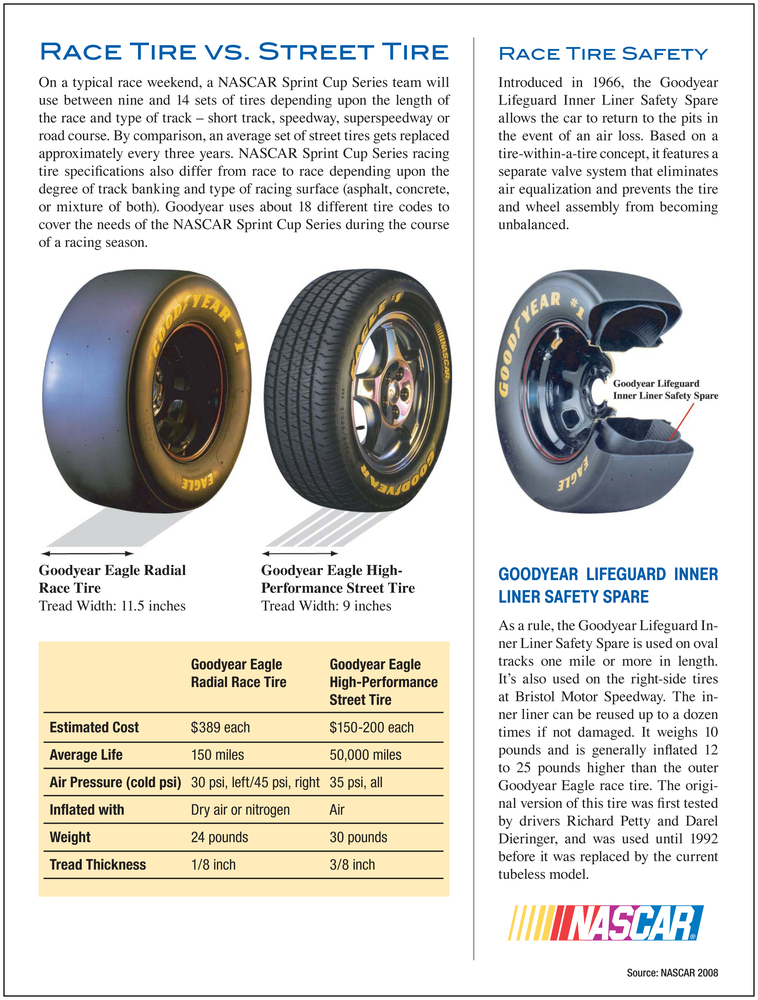 nine0003
nine0003
A side puncture is less dangerous than a longitudinal cut. However, not every defect requires replacement. Masters will be able to repair tires if the deformed area placed along the carcass threads does not exceed 50 mm. The possibility of repair is also available if the side cut located across the tire threads is less than 30 mm. However, we do not recommend doing repairs in this case with your own hands. To preserve the protective properties and avoid possible negative consequences, it is necessary to use professional equipment. nine0003
Should cuts be repaired? A popular question for motorists who are faced with a choice is whether to seal a defect or replace a wheel. The possible consequences of cuts scare car owners, but do-it-yourself repairs are more attractive because they are cheaper than buying fresh tires.
To avoid dangerous consequences, sealing small and large side cuts is prohibited if you need to repair more than 10 cords and close up a hole larger than 30 mm.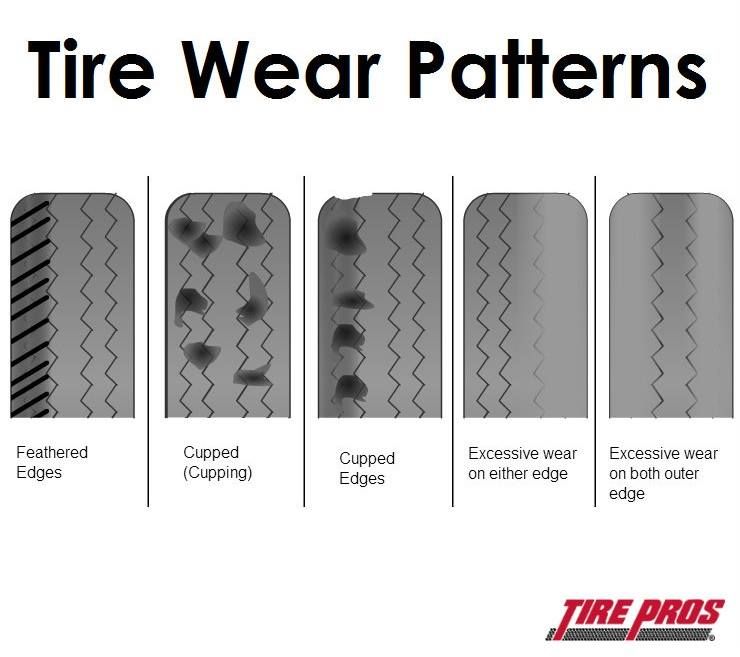 It is possible to repair tires for passenger cars with a side cut of the tire if it is a shallow scratch. nine0003
It is possible to repair tires for passenger cars with a side cut of the tire if it is a shallow scratch. nine0003
Driving with a cut in a tire is not safe. The degree of risk depends on the nature of the damage and the experience of the specialist who will seal the seam. Before sealing the hole with your own hands or entrusting a restoration to a specialist, you should examine the lateral damage. Manufacturers recommend replacing tires if it is necessary to seal 20 mm or more. However, if it is possible to change a wheel, the opportunity should be taken as soon as possible. Since even a small defect is dangerous during the trip. During operation, a hernia is formed, which explodes if timely replacement is not made. If you drive on a tire with a side cut for a long time and do not do repairs in the service or with your own hands, there is a high risk of getting into an accident. nine0003
In order to strengthen the structure of tires, manufacturers add several layers of metal cord to models. Also on the market there is a fabric cord, which includes fibers from nylon, which allows you to increase the strength of rubber. Therefore, in order to seal the tire in the service or repair it yourself in case of a puncture, it is necessary to use high-quality materials. If the recommendations for replacement are not followed, there is a high risk of dangerous and unpredictable consequences.
Also on the market there is a fabric cord, which includes fibers from nylon, which allows you to increase the strength of rubber. Therefore, in order to seal the tire in the service or repair it yourself in case of a puncture, it is necessary to use high-quality materials. If the recommendations for replacement are not followed, there is a high risk of dangerous and unpredictable consequences.
Winter Drive protection
Tires Goodyear UltraGrip Arctic 2 SUV
Winter Drive Protection Sound Comfort
Rating:
4.5
Tires Goodyear UltraGrip Ice 2
Winter Drive protection
Tires Goodyear UltraGrip Performance+ SUV
Winter Drive protection
Tires Goodyear UltraGrip Arctic 2
Winter Drive Protection Run On Flat Sound Comfort
nine0002 Tires Goodyear UltraGrip Performance+ To accurately assess the effects of tire deformation, before repairing a tire, contact a specialized center. The masters will figure out whether it is possible to continue driving a car or whether it is worth replacing the rubber. The main inspection criterion is the width of the seam that needs to be repaired. It should be borne in mind that it is dangerous to close up and seal holes with a width of more than 40 mm with rubber mixtures. nine0003
The masters will figure out whether it is possible to continue driving a car or whether it is worth replacing the rubber. The main inspection criterion is the width of the seam that needs to be repaired. It should be borne in mind that it is dangerous to close up and seal holes with a width of more than 40 mm with rubber mixtures. nine0003
If the craftsmen decide to restore the tire and make a patch, then the restoration process includes the following steps:
